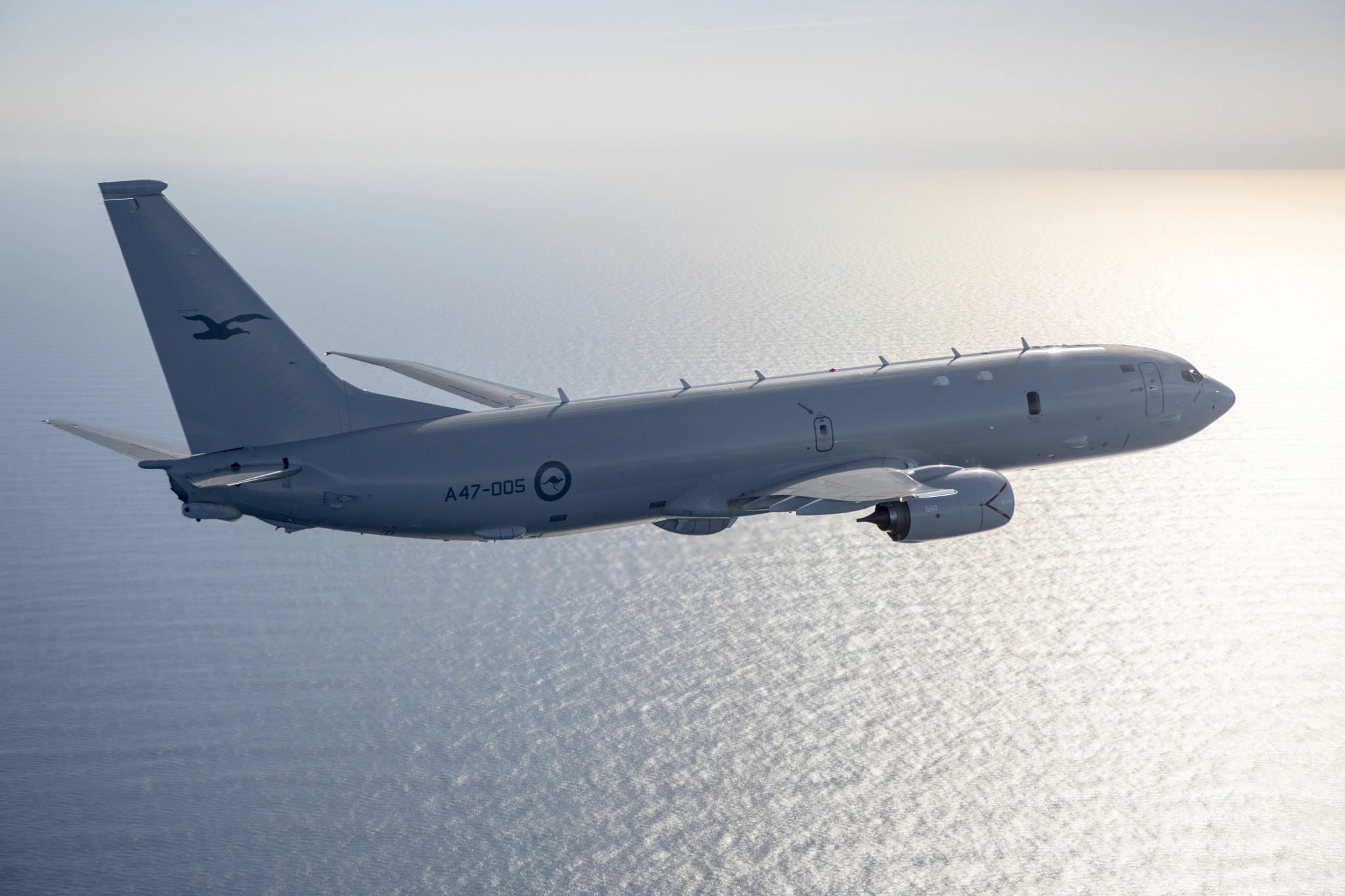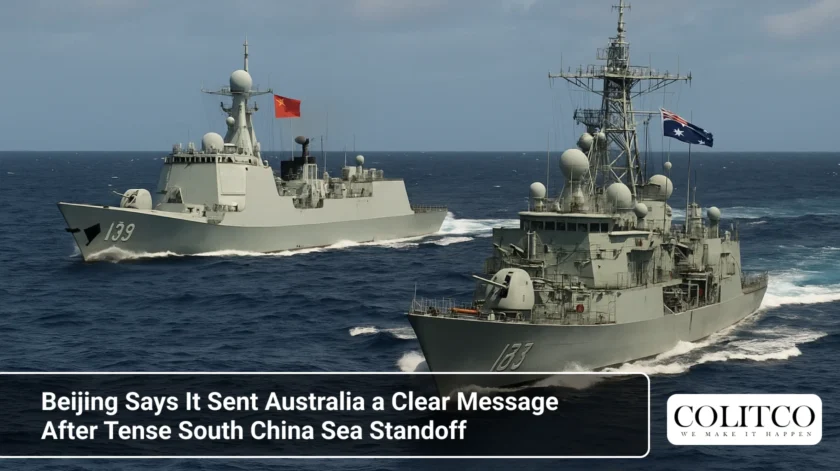A new flashpoint erupted in the South China Sea this week. China claims its military forces “drove away” an Australian surveillance aircraft that allegedly violated its airspace. Australia sees it differently.
The incident unfolded on 19 October 2025 when a Royal Australian Air Force P-8A Poseidon was conducting routine maritime patrol operations. That’s when things turned dangerous.
What Happened Above the Paracel Islands
A Chinese Su-35 fighter jet intercepted the Australian aircraft and released flares in close proximity. Defence officials in Canberra called the manoeuvre “unsafe and unprofessional.”
No Australian personnel were injured. The P-8A sustained no damage.
But the encounter marks another chapter in the escalating Australia-China tensions over the contested waterway.
Senior Colonel Li Jianjian, spokesperson for the PLA’s Southern Theatre Command Air Force, issued a sharp statement. He claimed the Australian aircraft “illegally entered Chinese airspace over the Xisha Islands without approval.”
The Xisha Islands are what China calls the Paracels. Vietnam and Taiwan also claim them.
Li said PLA forces tracked, monitored and warned the aircraft before driving it away. He added that Australia’s actions “seriously infringed upon China’s sovereignty” and could trigger maritime or aerial accidents.
“Our forces remain on high alert at all times,” Li warned. “We will resolutely safeguard national sovereignty, security and regional peace and stability.”
 Royal Australian Air Force P-8A Poseidon
Royal Australian Air Force P-8A Poseidon
Australia Pushes Back on Beijing’s Version
Australia’s Defence Minister Richard Marles rejected China’s claims outright.
He told reporters the P-8A was operating in international airspace when the Chinese fighter approached. The flares were released so close that any impact could have caused significant damage to the aircraft.
“The proximity of the J-16 was so close that there’s no way you could have been able to ensure that the flares did not hit the P-8,” Marles said in an interview with Sky News Australia.
He described the incident as deliberate and reckless.
The Australian government lodged formal protests with Beijing through diplomatic channels in both Canberra and Beijing. Officials emphasised that Australia expects all countries, including China, to operate their militaries safely and professionally.
A Pattern of Dangerous Encounters
This isn’t an isolated incident. Similar confrontations between PLA and Australian forces have been mounting.
In February 2025, Chinese warships entered waters northeast of Australia’s mainland, prompting close monitoring by the Royal Australian Navy.
That same month, another Chinese J-16 fighter released flares within 30 metres of an Australian P-8A over the South China Sea.
In May 2024, a PLA fighter dropped flares near an Australian helicopter over the Yellow Sea.
Each time, China defended its actions as “legitimate, lawful, professional and restrained.” Each time, Australia called them dangerous and unprofessional.
The pattern reveals the depth of the strategic rivalry playing out across the Indo-Pacific.
Why the South China Sea Matters
China claims sovereignty over most of the South China Sea based on historical grounds. It has built artificial islands and militarised them with weapons and surveillance systems.
An international tribunal ruled in 2016 that China’s sweeping claims had no legal basis. Beijing rejected the ruling.
The sea lanes are vital for global trade. Around USD 3.4 trillion in trade flows through these waters annually.
For Australia, the issue goes beyond trade routes. It’s about upholding international law and freedom of navigation.
Defence analysts warn that repeated close encounters raise the risk of miscalculation. A collision or accident could spiral into a broader confrontation.
Key Flashpoints in the Region
- Paracel Islands: Controlled by China since 1974, claimed by Vietnam and Taiwan
- Spratly Islands: Multiple claimants including China, Philippines, Vietnam, Malaysia
- Scarborough Shoal: Disputed between China and the Philippines
- Taiwan Strait: Regular PLA drills near Taiwan raise regional tensions
Chinese Warships Operating Near Australia
Around the same time as the aerial incident, three Chinese naval vessels were detected in Australia’s exclusive economic zone.
The PLA Navy frigate Hengyang, cruiser Zunyi and supply ship Weishanhu transited through the Torres Strait and moved south along Australia’s east coast.
Defence Minister Marles confirmed that HMAS Arunta was shadowing the Chinese frigate. Additional P-8A patrols and naval vessels were on standby.
China described the transit as routine. Australia monitored it closely.
Broader Implications for Regional Security
The incident reflects China’s assertive approach to territorial claims in the South China Sea. Beijing increasingly uses its military to challenge foreign operations in disputed areas.
The United States has repeatedly warned that unsafe manoeuvres by Chinese aircraft can cause unintended consequences.
Canada reported a similar incident in October 2025 when Chinese jets armed with air-to-air missiles intercepted a Canadian maritime patrol aircraft in the East China Sea.
These encounters are part of China’s strategy to normalise its control over contested waters. State media often highlights successful “expulsions” of foreign aircraft and ships.
Australia’s response strategy involves publicising dangerous interactions to build international pressure on Beijing to modify its behaviour.
The approach tests whether transparency can deter future incidents or simply adds fuel to the diplomatic fire.
Also Read: Mercury NZ Taps Veteran HR Leader Michele Mauger to Shape Future Workforce Strategy
What Comes Next
Neither side shows signs of backing down.
Australia continues Operation Gateway, its longest-running surveillance mission in the region. The operation began in 1981 and has evolved to monitor shipping lanes and enforce UN sanctions.
China maintains its position that foreign military operations near its claimed territories constitute provocations.
“The🇺🇸U.S.🇦🇺#Australia should avoid using all these provocative actions, especially military actions, to stir up tension in #SouthChinaSea.”
Shen Shiwei & Dr. Yan Yan
My YouTube channel: https://t.co/5VVg7xkjjY pic.twitter.com/7kPIm8re55
— Shen Shiwei 沈诗伟 (@shen_shiwei) October 20, 2025
The risk of a serious accident remains high. Flares released at close range can be sucked into aircraft engines and cause catastrophic failures.
As military activity intensifies across the Indo-Pacific, the margin for error shrinks.
Both nations have invested heavily in critical minerals and defence capabilities, signalling long-term strategic competition.
The South China Sea will remain a contested space where aircraft and ships from rival powers operate in close proximity. Each encounter adds another data point to the tense relationship between Beijing and Canberra.
For now, diplomats on both sides will manage the fallout from this latest incident. But the fundamental disagreement over sovereignty and international law remains unresolved.












